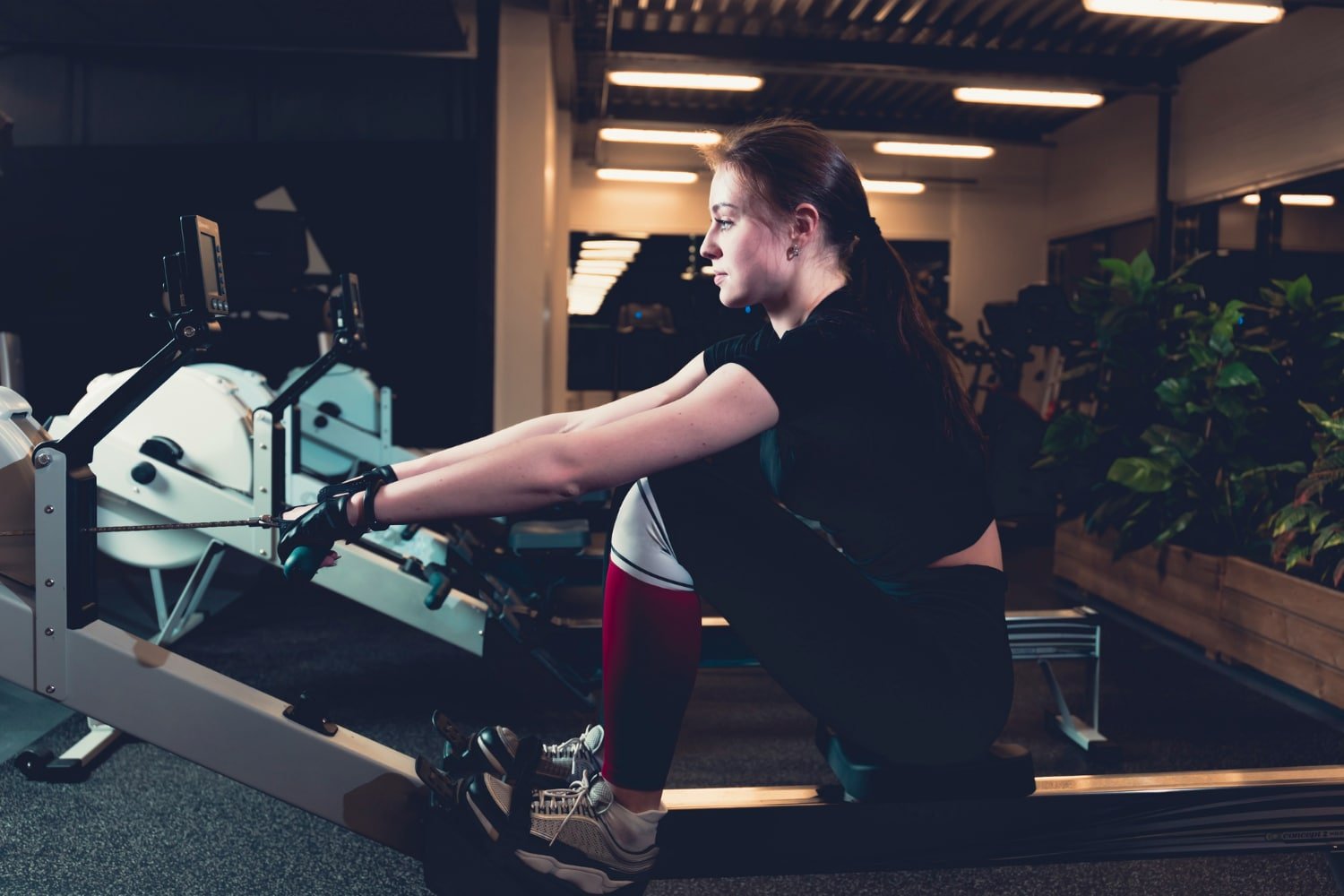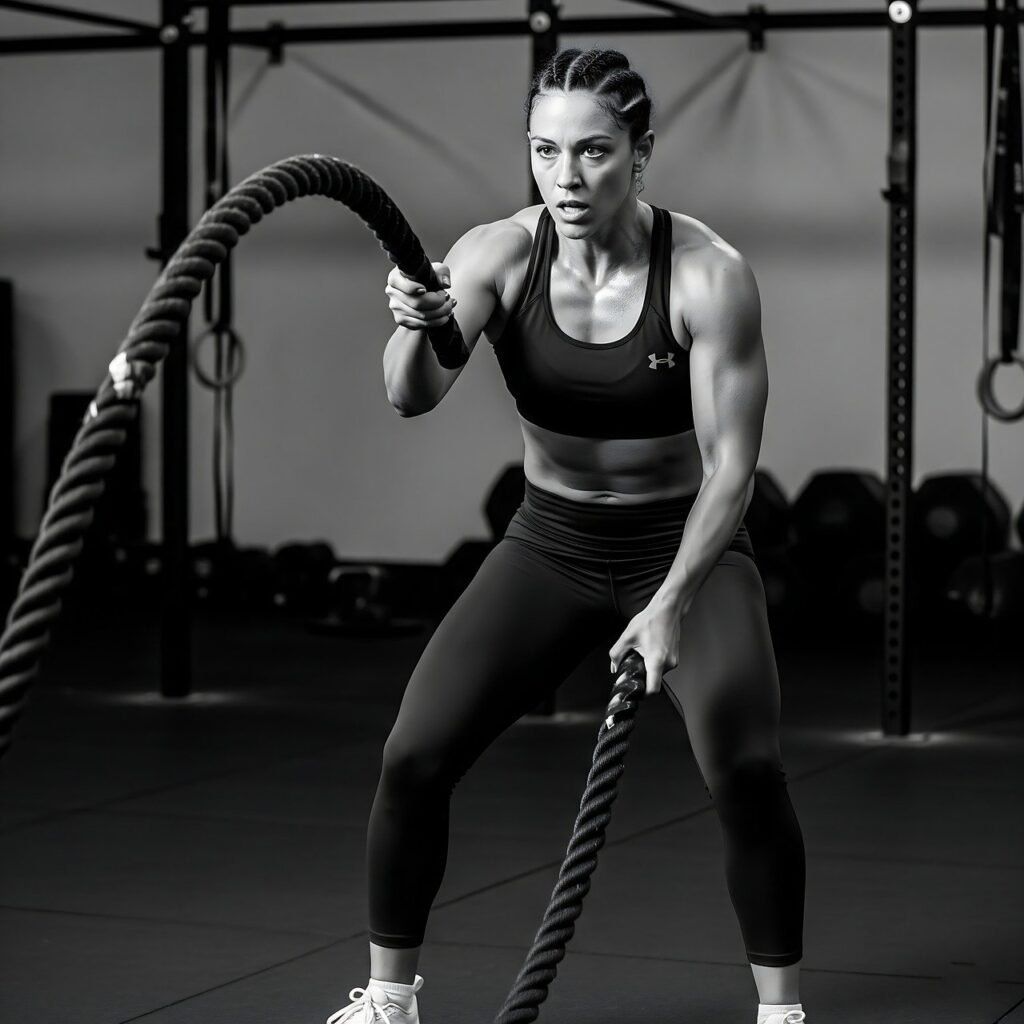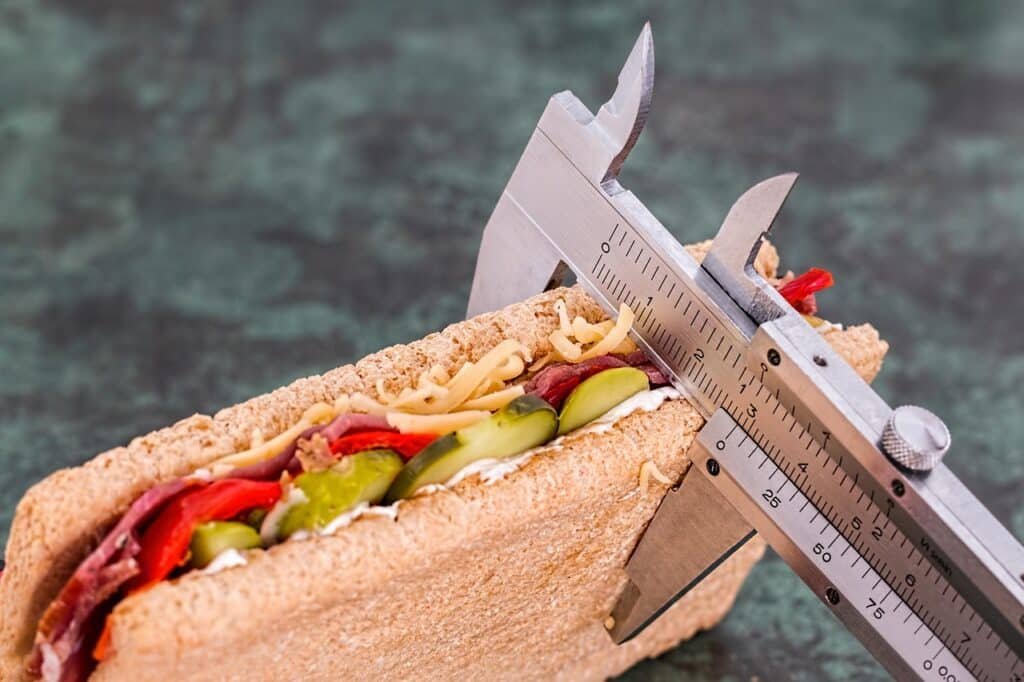Should I Do Cardio While Bulking? Maximize Gains Without Loss

So, you’re trying to bulk up, right? That means eating a lot and lifting heavy to pack on muscle. But then the question pops up: should I do cardio while bulking? It feels a bit weird, like you’re working against yourself since cardio burns calories. Most people think you should ditch it completely.
But honestly, cutting out cardio might actually slow down your progress. When done the right way, it can actually help your lifting, make you recover faster, and keep you healthier overall.
We’re going to look at why cardio can be a good thing for your bulk, how it helps you perform better, and how to fit it in without messing up your gains.
Key Takeaways
- Doing cardio while bulking can actually boost your weightlifting performance by helping you recover quicker between sets, meaning you can lift more without getting as tired.
- Adding cardio into your bulk routine helps keep your heart healthy, which makes it easier to switch to a cutting phase later if you decide to do that.
- Regular cardio is good for your general health. It can help lower blood pressure, improve cholesterol, and just make you feel better mentally and physically.
- To get the good stuff from cardio without the bad, try to do it 2 to 3 times a week, stick to easier activities, and keep your sessions under 40 minutes.
- The main reasons cardio can mess up your bulk are doing way too much of it, not eating enough to make up for the calories you burn, or doing cardio right before you lift weights.
Understanding Cardio’s Role During A Bulk
So, you’re in the middle of a bulk, trying to pack on muscle, and the question pops up: “Should I even bother with cardio?” It’s a common thought, and honestly, the idea of burning extra calories when you’re trying to create a surplus can feel counterintuitive.
Many people think cardio is the enemy of muscle gain, but that’s not entirely true. Cardio can actually be a helpful tool during your bulking phase if you use it smartly.
Cardio’s Impact on Caloric Surplus

Bulking is all about eating more calories than you burn to give your body the fuel it needs to build muscle. Cardio, by its nature, burns calories. If you add a lot of cardio without increasing your food intake to match, you could accidentally eat yourself into a calorie deficit, or at least reduce your surplus significantly.
This makes it harder for your body to build new muscle tissue. Think of it like this: you need a consistent stream of building materials (calories) to construct a house (muscle).
If you’re constantly taking away materials (burning calories with cardio) without bringing in enough, the construction project slows down or stops.
The Interference Effect on Muscle Growth
There’s also something called the “interference effect.” This happens when intense or prolonged cardio, especially if done too close to your weightlifting sessions, can mess with the signals your body uses to build muscle.
It can also deplete your energy stores (glycogen) that you need for those heavy lifting sets. If you’re too tired from cardio, your workouts won’t be as effective, and that directly impacts how much muscle you can stimulate.
It’s like trying to do a tough workout after running a marathon – you’re just not going to perform at your best.
Cardio as a Tool for a ‘Cleaner’ Bulk
Now, here’s where cardio can actually be your friend. While bulking, it’s pretty common to gain a bit of body fat along with the muscle. That’s just part of the process.
However, doing some cardio can help manage that fat gain. It can help ensure that the weight you’re putting on is leaning more towards muscle and less towards unwanted fat.
This can make your bulk feel ‘cleaner’ and potentially make the subsequent cutting phase (when you aim to lose fat) a bit easier. It’s about finding that balance so you’re not just gaining weight, but gaining quality weight.
Benefits of Integrating Cardio While Bulking
A lot of people think you should ditch cardio completely when you’re trying to bulk up. The idea is that cardio burns calories, and bulking is all about eating more to gain weight, so why would you want to burn those hard-earned calories?
But honestly, skipping cardio might actually be holding you back from reaching your full potential. When you do it the right way, cardio can actually help your strength training, make your recovery faster, and just generally improve your health.
These are all good things that can help you pack on more muscle over time.
Enhanced Strength Training Performance

Think about it: when your heart and lungs are in good shape, you can push harder for longer. This means you might be able to get through your lifting sessions with less fatigue.
Better endurance can translate to being able to do more reps, more sets, or even lift a bit heavier. It’s like giving your muscles a better environment to grow in because you’re not getting winded as quickly.
Improved Recovery Between Sets
Cardio, especially the lower-intensity kind, can actually help with recovery. It gets blood flowing to your muscles, which helps deliver nutrients and clear out waste products that build up during lifting.
This means you might feel more ready for your next set sooner, rather than just sitting there gasping for air. It’s a subtle but useful way to keep the intensity up during your workouts.
Maintaining Cardiovascular Health
This one’s pretty straightforward. Lifting weights is great for your muscles, but it doesn’t do as much for your heart and lungs as cardio does.
Keeping your cardiovascular system in good shape is important for your overall health, no matter what your fitness goals are. Plus, if you ever plan on cutting down after bulking, having a solid cardio base will make that transition much smoother.
Better Overall Well-being
Beyond just muscle and strength, cardio has a positive impact on how you feel. It can help reduce stress, improve your mood, and even boost your sleep quality.
When you feel better mentally and physically, you’re more likely to stick to your training and nutrition plan, which is key for consistent progress during a bulk. It’s not just about the gains; it’s about feeling good while you’re working towards them.
Strategic Cardio Integration for Muscle Gain

So, you’re trying to pack on muscle, but you’re wondering if adding some cardio is a good idea. The short answer is yes, but you’ve got to be smart about it.
It’s not about running marathons or doing intense HIIT sessions every day. Think of cardio as a helpful tool, not a roadblock, to your muscle-building journey.
Low-Intensity Steady State (LISS) Cardio
When you’re bulking, the go-to cardio style should generally be Low-Intensity Steady State, or LISS. What does that mean? Basically, it’s cardio done at a comfortable, consistent pace for a set duration. Think brisk walking on an incline, cycling at a moderate pace, or using the elliptical without pushing yourself to the max.
The goal here isn’t to gas yourself out; it’s to keep your heart rate elevated enough to burn some extra calories and improve blood flow without wrecking your recovery or interfering with your lifting sessions.
Benefits of LISS During Bulking
Why LISS specifically? Well, it offers a few key advantages when you’re trying to grow:
- Improved Recovery: LISS can actually help your muscles recover faster. The increased blood flow brings nutrients to your muscles and helps clear out waste products that can cause soreness. It’s like a gentle flush for your system.
- Calorie Management: It helps you burn a controlled amount of extra calories. This is useful for managing the fat gain that can sometimes come with a calorie surplus, helping you achieve a ‘cleaner’ bulk.
- Cardiovascular Health: Let’s not forget, your heart is a muscle too! Keeping it healthy is important for overall well-being and can even support your strength training performance by improving your work capacity.
- Reduced Soreness: While it won’t eliminate all muscle soreness, a light cardio session can help ease stiffness, making you feel better between workouts.
When to Consider High-Intensity Cardio

High-Intensity Interval Training (HIIT) is a different beast. It involves short bursts of intense effort followed by brief recovery periods. While HIIT is fantastic for fat loss and improving cardiovascular fitness quickly, it’s generally not ideal for bulking.
Why? Because it’s incredibly taxing on your central nervous system and muscles, requires a lot of recovery, and can more easily interfere with muscle growth signals. If you absolutely want to include HIIT, do it very sparingly – maybe once a week at most – and ideally on a day separate from your heaviest lifting sessions.
For most of your bulking phase, sticking to LISS is the smarter play to keep your gains on track.
Optimizing Cardio Frequency and Duration
So, you’re trying to pack on muscle, but you don’t want to completely ditch cardio. That’s smart. The trick is finding that sweet spot for how often and how long you should be doing it. Too much, and you might eat into your gains. Too little, and you miss out on some solid benefits.
Recommended Cardio Sessions Per Week
For most people bulking, aiming for 2 to 3 cardio sessions per week is a good starting point. This frequency allows you to reap the cardiovascular benefits and aid recovery without overdoing it. It’s enough to keep your heart healthy and improve your work capacity, but not so much that it significantly impacts your calorie surplus or recovery from lifting.
Ideal Session Length for Bulking
When it comes to duration, shorter is often better during a bulk. Think 20 to 30 minutes per session. This is usually enough time to get your heart rate up and get the benefits without burning a ton of extra calories. You’re not trying to train for a marathon here; you’re supporting your muscle-building efforts.
Total Weekly Cardio Volume
Putting it all together, your total weekly cardio volume should be manageable. If you’re doing 2-3 sessions of 20-30 minutes each, you’re looking at roughly 40-90 minutes of cardio per week. This is a very reasonable amount that won’t derail your bulking goals.
It’s about consistency and making sure it fits into your overall training and nutrition plan. Remember, your primary focus is still lifting weights and eating enough to grow.
It’s easy to get caught up in the idea that more cardio is always better, but during a bulk, that’s usually not the case. You need to fuel muscle growth, and excessive cardio burns through those hard-earned calories. Focus on quality over quantity when it comes to your cardio sessions.
Here’s a quick look at how it might break down:
| Session Frequency | Session Duration | Total Weekly Time |
|---|---|---|
| 2 times/week | 25 minutes | 50 minutes |
| 3 times/week | 30 minutes | 90 minutes |
This approach helps maintain your cardiovascular health and can even improve your recovery between lifting sets, making your overall training more effective. It’s all about balance and making sure your cardio serves your bulking goals, not hinders them.
Common Pitfalls to Avoid When Bulking
Bulking up is all about gaining muscle, and while cardio can help, it’s easy to mess things up if you’re not careful. Think of it like trying to build a house – you need the right materials and a solid plan, or the whole thing could fall apart. Let’s talk about the common mistakes people make so you can avoid them.
Excessive Cardio Duration or Frequency
Doing too much cardio is probably the biggest mistake. If you’re spending hours on the treadmill or doing intense cardio sessions every single day, you’re likely burning way too many calories. This makes it really hard to stay in that calorie surplus needed for muscle growth.
Plus, it can lead to overtraining, making you tired and sore, which then hurts your lifting performance and recovery. Remember, the goal with cardio during a bulk is for health and maybe a little fat management, not to burn a ton of calories.
Neglecting Calorie Intake Adjustments

This is a big one. You start doing cardio, which burns extra calories, but you forget to eat more to make up for it. If you don’t increase your food intake to match the calories you’re burning, you’re basically canceling out your calorie surplus.
This means your muscle growth will slow down, or even stop. It’s like trying to fill a bucket with a hole in it – you’re just not going to make progress.
Performing Cardio Immediately Before Lifting
Doing a long cardio session right before you hit the weights is a bad idea. It uses up your energy stores, specifically glycogen, and leaves you feeling fatigued. When you get to your lifting session, you won’t have the same strength or power.
This means you won’t be able to lift as heavy or perform as many reps, which directly impacts the stimulus you give your muscles for growth.
Ignoring Overall Recovery Needs
Adding cardio means your body has more to recover from. If you’re not getting enough sleep, taking rest days, or managing your stress, your body won’t be able to repair and build muscle effectively.
Cardio adds to the overall stress on your system, and if you don’t balance it with proper rest, you’ll end up feeling run down, your gains will suffer, and you might even get injured. Recovery is just as important as the workouts themselves.
Cardio and Recovery During Muscle Gain
How Cardio Aids Muscle Repair
So, you’re hitting the weights hard, trying to pack on size. That’s great. But what happens after the gym? Your muscles are basically in a state of repair. Think of low-intensity cardio, like a brisk walk or a light bike ride, as a way to help that repair process along.
It gets your blood flowing without really taxing your muscles further. This increased blood flow is like a delivery service for your muscles, bringing in the nutrients they need to fix themselves and taking away the waste products that can make you sore.
It’s not going to eliminate soreness completely, but it can definitely make you feel less stiff and ready to go for your next workout sooner. It’s about working smarter, not just harder.
Improving Conditioning Without Hindering Gains
It might seem weird, but doing a bit of cardio can actually make your weightlifting sessions better. When you have better conditioning, your heart and lungs work more efficiently. This means you can recover faster between sets.
Instead of feeling wiped out after a tough set of squats, you might find you’re ready to go again much quicker. This improved recovery between sets allows you to push harder for more reps or lift heavier weights over time, which is exactly what you want when you’re trying to build muscle.
Plus, keeping up with cardio means you won’t lose your fitness base. If you stop cardio completely during a bulk, jumping back into it later, especially when you start cutting, can be a shock to your system. Maintaining it means a smoother transition later on and better overall health.
Balancing Cardio with Resistance Training Recovery
Here’s the deal: your body only has so much energy and capacity to recover. When you’re lifting weights, you’re already asking a lot from your body.
Adding too much cardio, especially intense stuff, can push you over the edge. This means your muscles might not get the rest they need to grow. It’s a balancing act.
You want enough cardio to get the benefits we talked about – better recovery between sets, improved heart health, and maintaining conditioning – but not so much that it stops you from recovering from your lifting.
Here’s a simple way to think about it:
- Prioritize Lifting: Your resistance training is the main driver of muscle growth. Make sure you’re recovering well from those sessions.
- Cardio as Support: Use cardio as a tool to support your lifting and overall health, not as another major stressor.
- Listen to Your Body: Pay attention to how you feel. If you’re constantly exhausted or your lifts are suffering, you might be doing too much cardio or not eating enough to compensate.
The key is to find that sweet spot where cardio helps you recover better and stay fit without taking away from the energy and resources your muscles need to grow. It’s about making sure your cardio complements your muscle-building goals, not competes with them. If you’re not eating enough to fuel both your lifting and your cardio, that’s a problem. You need that calorie surplus, remember?
| Activity Type | Intensity | Duration (mins) | Frequency (per week) | Impact on Recovery | Muscle Growth Support |
|---|---|---|---|---|---|
| Low-Intensity Steady State (LISS) | Low | 20-30 | 2-3 | Minimal | Good |
| Moderate Intensity Cardio | Medium | 20-30 | 1-2 | Moderate | Fair |
| High-Intensity Interval Training (HIIT) | High | 10-15 | 0-1 | High | Poor |
Tailoring Cardio to Your Bulking Goals
Cardio for Hard Gainers
If you’re someone who struggles to put on weight, often called a “hard gainer,” adding cardio needs extra thought. The main goal here is to gain mass, and cardio burns calories, which can make that harder. You want to keep cardio sessions short and not too frequent.
Think of it as a way to improve your overall health and recovery without significantly impacting your calorie surplus. Low-intensity steady-state (LISS) activities like a brisk walk for 20-30 minutes, maybe twice a week, are usually best. Avoid anything too taxing that could eat into your recovery or appetite.
Cardio for Managing Fat Gain
Bulking often comes with a bit of fat gain, and that’s normal. However, if you want to keep that fat gain in check, cardio can be your friend. By incorporating moderate cardio, you can help manage your calorie balance. This doesn’t mean going for long, intense runs every day.
Instead, aim for 2-3 sessions of moderate-intensity cardio per week, perhaps 30 minutes each. This helps burn some extra calories, keeping your body composition a bit leaner, which can make the eventual cutting phase easier.
It’s about finding that balance so you’re still in a caloric surplus for muscle growth but not overdoing it on the fat gain.
Cardio for Maintaining Fitness Levels
Sometimes, you might be bulking but also want to maintain a certain level of general fitness or prepare for a sport. In this case, you can be a bit more flexible with your cardio. You might do 3-4 sessions per week, perhaps mixing in some slightly longer LISS sessions or even one shorter, higher-intensity interval session if your recovery allows.
The key is still to monitor how your body responds. If you notice your strength training performance dipping or you’re not recovering well, it’s a sign you might be doing too much.
Remember, the primary goal is still muscle gain, so cardio should support that, not detract from it.
Here’s a quick look at how frequency might change:
| Goal | Recommended Cardio Frequency | Session Duration | Intensity |
|---|---|---|---|
| Hard Gainer (Mass Gain) | 1-2 times/week | 20-30 minutes | Low |
| Managing Fat Gain | 2-3 times/week | 20-30 minutes | Low to Moderate |
| Maintaining Fitness | 3-4 times/week | 20-40 minutes | Low to Moderate |
Wrapping It Up: Cardio and Your Bulk
So, should you do cardio while bulking? The short answer is yes, but with a big emphasis on doing it smart. Think of cardio not as something to avoid, but as a tool to help you out. It can keep your heart healthy, help you recover faster between lifts, and even make your workouts feel better overall.
The key is not to overdo it. Stick to a couple of sessions a week, keep them mostly low-impact and not too long, and make sure you’re eating enough to cover the extra calories you’re burning.
By finding that balance, you can build muscle effectively without accidentally slowing down your progress or gaining too much unwanted fat. It’s all about making cardio work for your bulking goals, not against them.
FAQs
Can I still do cardio while trying to gain muscle?
Yes, you absolutely can! Doing cardio while bulking is a good idea. It helps your heart stay healthy and can even make your weightlifting workouts better by helping you recover faster between sets. Just make sure you don’t overdo it, or it might make it harder to gain weight.
How much cardio should I do when I’m bulking?
It’s best to keep cardio moderate. Aim for about 2 to 3 sessions per week, and keep each session between 20 to 40 minutes long. This helps you get the benefits without burning too many calories, which you need for muscle growth.
What’s the best type of cardio to do while bulking?
Low-intensity cardio is usually the way to go. Think of things like brisk walking, cycling at a relaxed pace, or using the elliptical. These activities help your heart and blood flow without making you too tired for your lifting sessions.
Will doing cardio stop me from gaining muscle?
Not if you do it smartly! The main way cardio can hurt muscle gain is if you do too much, burning too many calories, or if you don’t eat enough to make up for it. As long as you keep your calorie intake high enough and don’t overdo the cardio, you should be fine.
Should I do cardio before or after lifting weights?
It’s generally better to do cardio after your weightlifting workout, or even on a separate day. Doing cardio right before lifting can make you tired and reduce how much weight you can lift, which is important for building muscle.
Can cardio help me gain ‘cleaner’ when bulking?
Yes, it can! Doing cardio helps you burn some extra calories, which can help control how much body fat you gain while you’re trying to build muscle. This means you’ll gain more muscle and less fat, leading to a ‘cleaner’ bulk.



